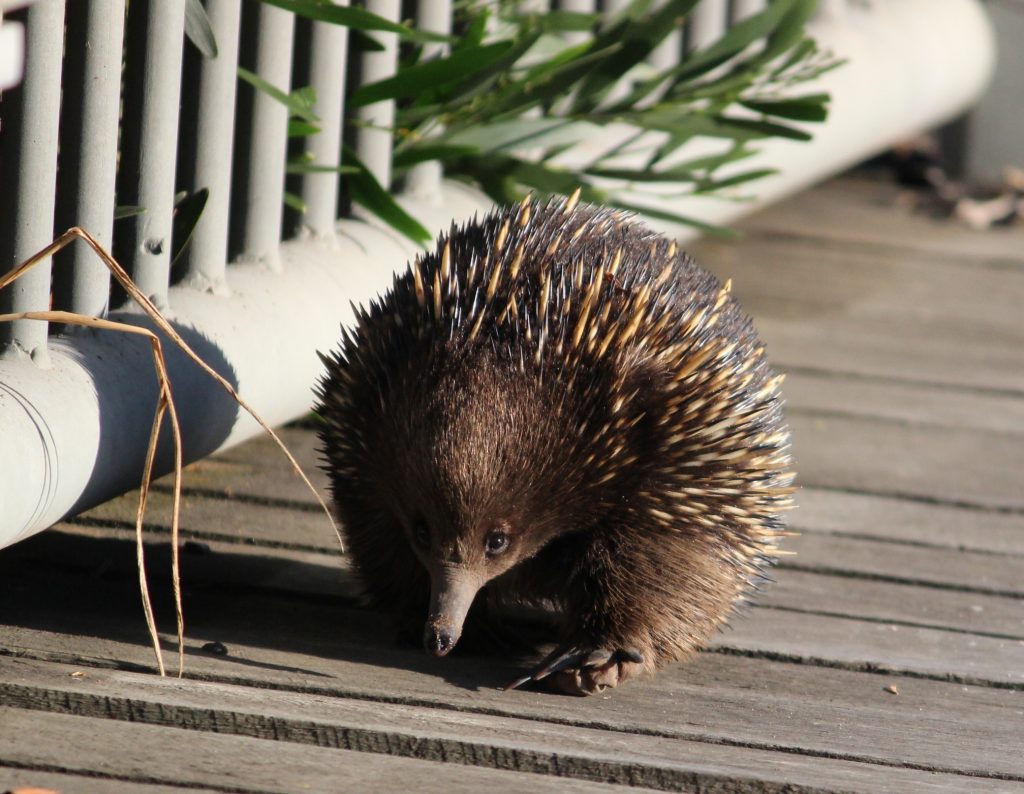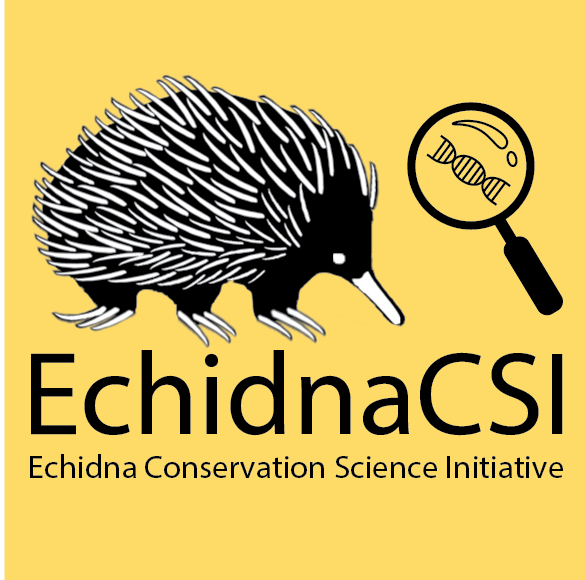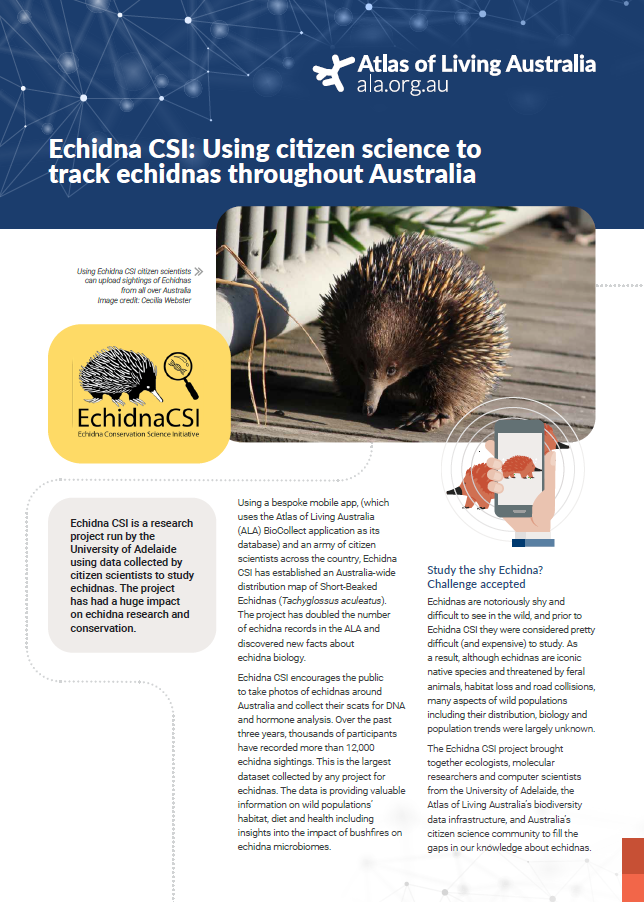Echidna CSI is a research project run by the University of Adelaide using data collected by citizen scientists to study echidnas. The project has had a huge impact on echidna research and conservation.
Using a bespoke mobile app, (which uses the Atlas of Living Australia (ALA) BioCollect application as its database) and an army of citizen scientists across the country, Echidna CSI has established an Australia-wide distribution map of Short-Beaked Echidnas (Tachyglossus culeatus). The project has doubled the number of echidna records in the ALA and discovered new facts about echidna biology. Echidna CSI encourages the public to take photos of echidnas around Australia and collect their scats for DNA and hormone analysis. Over the past
three years, thousands of participants have recorded more than 12,000 echidna sightings. This is the largest dataset collected by any project for echidnas. The data is providing valuable information on wild populations’ habitat, diet and health including insights into the impact of ushfires on echidna microbiomes.
Study the shy Echidna? Challenge accepted
Echidnas are notoriously shy and difficult to see in the wild, and prior to Echidna CSI they were considered pretty difficult (and expensive) to tudy. As a result, although echidnas are iconic native species and threatened by feral animals, habitat loss and road collisions, many aspects of wild populations including their distribution, biology and population trends were largely unknown. The Echidna CSI project brought
together ecologists, molecular researchers and computer scientists from the University of Adelaide, the Atlas of Living Australia’s biodiversity data infrastructure, and Australia’s citizen science community to fill the gaps in our knowledge about echidnas.

from all over Australia. Image credit: Cecilia Webster
ALA tool enables scientists to tap into citizen workforce

The research team developed their own custom mobile application for the collection of data and linked this to the ALA’s BioCollect field data collection tool as the backend database and data access/visualisation tool, to enable citizen scientists to record echidna observations. All observations flow automatically into the ALA. The project has robust quality assurance processes built into it to ensure all records are verified, research-grade data points. The research team also have access to all citizen scientist echidna observations in the ALA uploaded via other applications such as iNaturalist. The Echidna CSI app is customised to the project and designed to guide users into collecting information that will be of most use. It also includes fun facts about echidnas so users can learn more about this iconic Australian species.
Mobile app has huge impact for echidna research and conservation
By combining novel science with citizen science, the Echidna CSI citizen science project has highlighted the extraordinary power of the citizen
science approach. More than 11,000 people have contributed to the Echidna CSI project. These citizen scientists have eyes on the ground in
many locations and have contributed sightings and genetic material from all states and territories including throughout protected areas and remote places. The research team could never have surveyed such a large area without the help of the Echidna CSI community contributors.
ALA infrastructure has been crucial in advancing echidna research and making the data, and data visualisations, accessible and open. This has resulted in the ability to leverage translational research, such as examining the impact of fire on echidna populations and diet.
Assessing echidna populations after the 2019-20 bushfires
All echidna records collected before the 2019-2020 bushfire season served as crucial baseline information to monitor and assess the health of echidna populations post fire. Echidna CSI has conducted some local scale research in fire impacted areas and is documenting a change in echidna microbiomes in areas such as Kangaroo Island in South Australia. This subspecies of echidnas is listed as endangered, so the more we can learn about their response to fire the better.
Research impact
- Echidna CSI – Improving monitoring of a cryptic species at continental scale using Citizen Science. Alan Stenhouse et al, Ecology and Conservation, Vol 28, Aug 2021

Echidna CSI in numbers
- 12,000 sightings
- 11,000 citizen scientists
- 700 scat samples
- 2017 Echidna CSI launched
- 7 states and territories
- Doubled the number of echidna records in the ALA
Awards and recognition
- Finalist in the 2021 Department of Industry, Science, Energy and Resources Eureka Prize for Innovation in Citizen Science
- Finalist for the 2021 South Australian Citizen Science Award
- Finalist in the 2021 South Australian Science Excellence and Innovation for citizen science and PhD research excellence
For more information
- Echidna CSI is available to download on both Android and Apple devices.
- For more information on the ALA visit ala.org.au or contact support@ala.org.au
